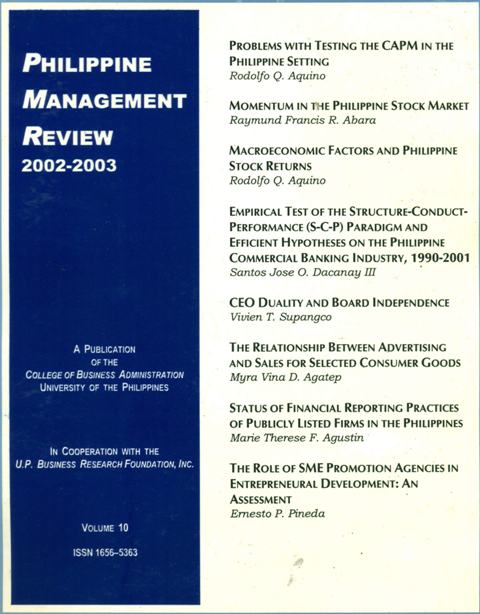Problems with Testing the CAPM in the Philippine Setting
Abstract
The paper explores the problems associated with testing the Capital Asset Pricing Model (CAPM) particularly in the Philippine setting. CAPM tests have so far failed to provide convincing evidence of the validity of the model. This appears to be the main reason why the CAPM has not found wide usage in the corporate financial practice, specifically in the estimation of the cost of equity capital for a company or a project. Using empirical data for 1996-2001, two major problems are identified. The first is that the usual market proxy used, which is the Philippine Stock Exchange Composite Index (Phisix), very likely is not representative of the true market portfolio. Given market imperfections, it could very well be that no portfolio with only positive holdings, as implied by the CAPM, can be mean-variance efficient. The second problem is that the assumption that a risk-free rate lending and borrowing rate exists, usually proxied by the interest rate on the 91-day Treasury bill, is probably too restrictive for the Sharpe-Lintner-Mossin version of the CAPM to hold. While the Black version of the CAPM addresses this second problem, the empirical issue of the unobservable true market portfolio still has to be addressed.


